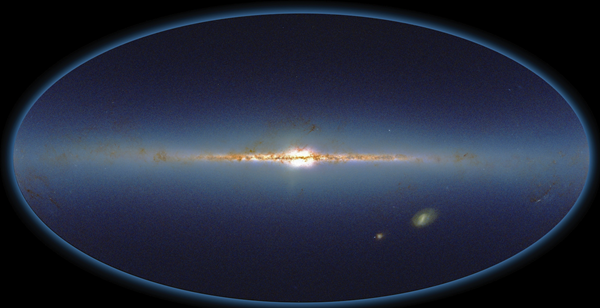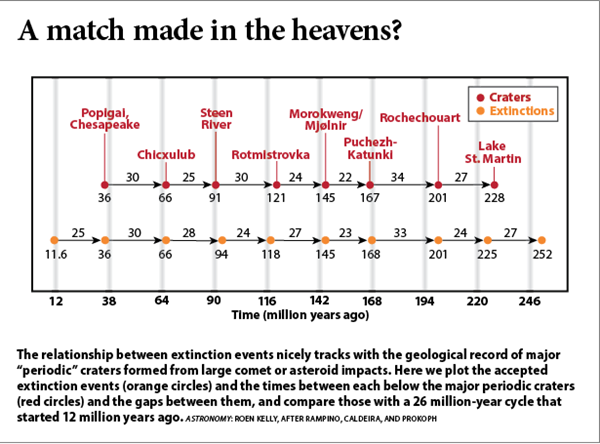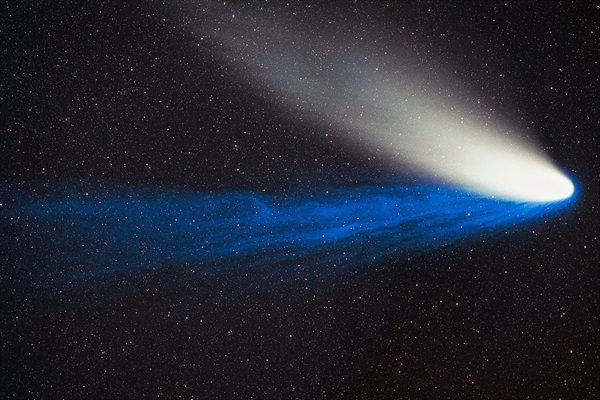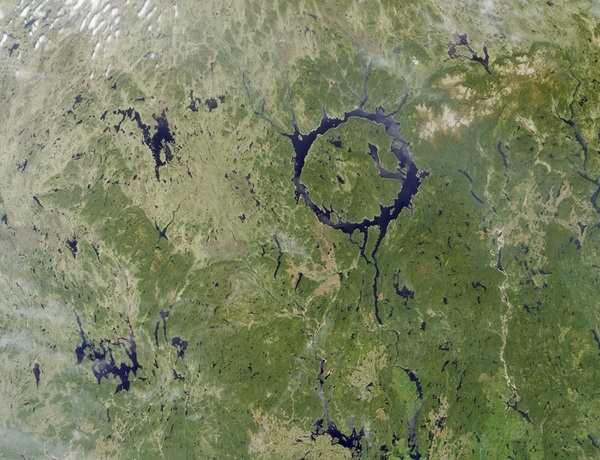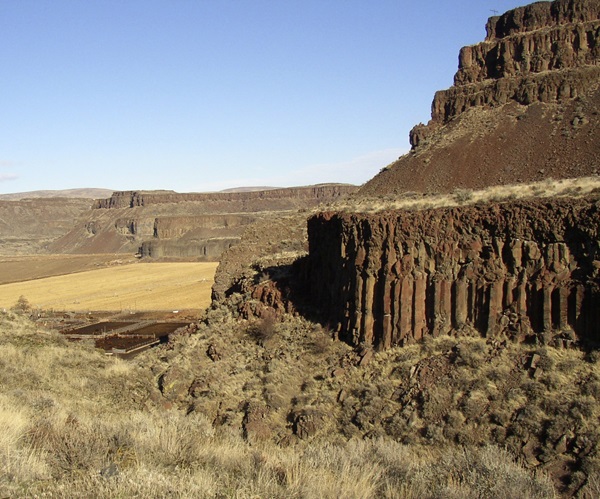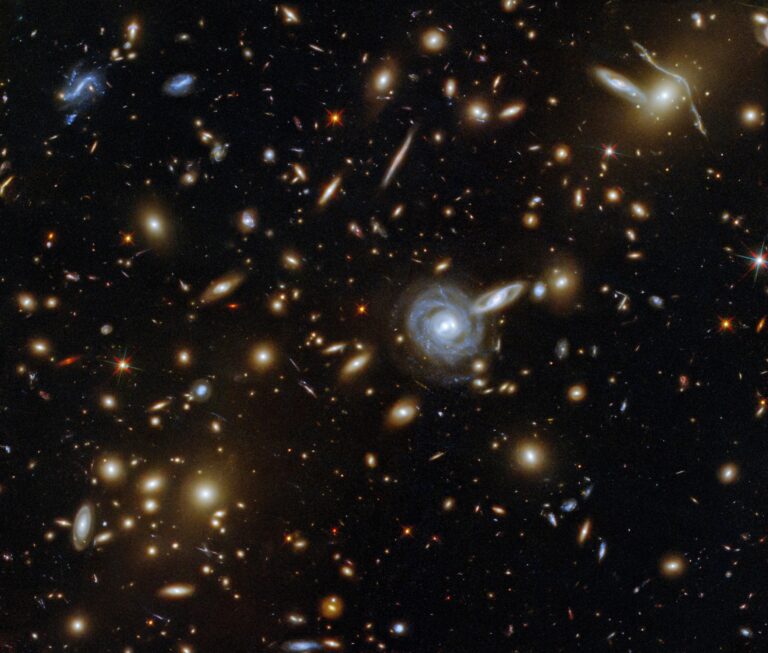Key Takeaways:
- Earth's geologic activity, including extinctions, may follow a 26-million-year cycle.
- This cycle could be caused by comet showers resulting from the Sun's passage through the Milky Way's plane.
- The gravitational pull of a dark matter disk in the galactic plane might trigger these comet showers.
- Dark matter accumulating in Earth's core could generate heat, causing volcanic activity and other geological events.
Although scientists can interpret the history through the lens of what they see today, an important question remains: Why did geologic events — such as hot-spot volcanism, the breakup of continents, fluctuations in seafloor spreading, tectonic episodes, and sea-level oscillations — occur exactly when and where they did? Are they random, or do they follow some sort of a pattern in time or space?
A complete theory of Earth should explain geologic activity in the spatial domain, as plate tectonics does quite well for the present (once you incorporate hot spots), but also in the time and frequency domains. Recent findings suggest to me that geology may be on the threshold of a new theory that seeks to explain Earth’s geologic activity in time and space in the context of its astronomical surroundings.
A big impact
The first clue for a cosmic connection came in a 1980 report by Nobel Prize-winning physicist Luis Alvarez and his son Walter, a noted geologist. Working at the University of California, Berkeley, the two suggested that the severe mass extinction of life at the end of the Cretaceous period 66 million years ago was the result of a devastating impact of a large asteroid or comet. This spectacular finding was followed in early 1984 with the remarkable claim by Dave Raup and Jack Sepkoski of the University of Chicago that mass-extinction events followed a 26 million-year cycle.
Could periodic impacts cause periodic extinctions? A number of craters of various sizes and ages mark the location of past impacts, and the estimated ages of several coincide fairly well with mass extinctions. For example, Nobel laureate Harold Urey noted in 1973 that the 56-mile-diameter (90 kilometers) Popigai crater in northern Siberia dates from about 36 million years ago, close to the time of the Late Eocene extinction event.
Cratering specialist Richard Grieve of the Canadian Bureau of Mines and Energy in Ottawa originally compiled the most complete list of terrestrial impact craters. (The ever-growing list is now maintained online.) The Earth Impact Database currently contains about 190 documented impact craters, and it includes their sizes, locations, and estimates of their ages. These craters are only a small subset of the actual number of objects that have collided with Earth. Many more impact craters have been so severely eroded and/or covered by sediments that they are difficult to identify. What’s more, no craters have been found in the deep ocean, only in shallow areas of the continental shelf. This is not surprising because the ocean floor is young, at most only about 180 million years old, so it should exhibit relatively few craters. And no one knows precisely what kind of structure a large impact into thin ocean crust would leave behind.
Many of the estimates of crater ages are merely rough limits based on the age of the older rocks targeted by the impact, or the age of the first sediments burying the impact structure. But a number of the craters have been dated well enough by studying the decay of the impactor’s radioactive elements to make a rigorous statistical analysis of the timing of the impacts. In the mid-1980s, the ages of the best-dated craters in Grieve’s list were run through the computer at NASA’s Goddard Institute for Space Studies in New York City using a new analysis method, and the impact-crater record showed a significant periodicity of about 30 million years.
At the same time, Walter Alvarez and physicist Richard Muller, also at UC Berkeley, did their own analysis and found a 28 million-year cycle using a somewhat different set of craters. Other researchers have revisited these results over the years, and they are still controversial. But in 2015, my former student Ken Caldeira and I studied more impact structures with improved crater-age data and were able to be more specific. We found that craters and extinctions both seem to occur with the same 26 million-year cycle.
A galactic connection
It seemed natural to search for any cosmic cycles that have a period of about 30 million years. One in particular stands out. The solar system oscillates with respect to the midplane of the disk-shaped Milky Way Galaxy with a period of about 60 million years. The Sun’s family passes through this plane twice each period, or once every 30 million years or so. The solar system behaves like a horse on a carousel — as we go around the disk-shaped galaxy, we bob up and down through the disk, passing through its densest part roughly every 30 million years.
Considering possible errors in dating the extinctions and the craters, as well as the uncertainties in the galactic period, the three cycles seemed to agree. Surely, it is too much of a coincidence that the cycle found in mass extinctions and impact craters should turn out to be one of the fundamental periods of our galaxy. The idea seemed almost too pretty to be wrong. But people searching for cycles have been fooled before, and we still had to answer the question: How does this cycle of movement lead to periodic perturbations of the Oort Cloud comets?
A large fraction of our galaxy’s normal matter resides in a flattened disk. Using computer simulations of galactic motion, physicist John Matese at the University of Louisiana and his colleagues calculated that the Oort Cloud would be especially vulnerable to gravitational perturbations caused by galactic tides — in essence, the pull of gravity of all the mass concentrated in the midplane. And a comparison of the estimated times when the solar system crossed the galactic plane with the times of impacts and mass extinctions showed potential correlations.
A dark matter connection?
More recently, in 2014, astrophysicists Lisa Randall and Matthew Reece at Harvard University suggested that the largest gravitational perturbations of the Oort Cloud could be from an invisible thin disk of exotic dark matter. Astronomers believe dark matter — a mysterious form of matter that interacts only through the gravitational force — accounts for about 85 percent of all the matter in the universe. Amazingly, all the visible matter in planets, stars, nebulae, and galaxies makes up only 15 percent of the total.
Most astrophysicists believe that dark matter is likely composed of weakly interacting massive particles, or axions. But whatever it is, dark matter does not interact with electromagnetic radiation, so it is difficult to detect. Although scientists infer that dark matter resides in spherical halos surrounding spiral galaxies like our own, Randall and Reece suggested that some dark matter also would be concentrated in a thin disk along the galaxy’s midplane.
Some researchers predict that such a disk naturally will fragment into smaller, denser clumps. A future test for the existence of a dark matter disk will rely on new data coming from the European Space Agency’s Gaia spacecraft, which is measuring the motions of stars in the galactic plane. The behavior of these stars depends on the total mass in the galaxy’s disk, which should tell us how much — if any — dark matter is present.
Randall and Reece hypothesize that when the solar system passes through the densely populated galactic midplane, the concentrated gravitational force of the dark and visible mass jostles the Oort Cloud. This sends a shower of comets toward the inner solar system about every 26 million to 30 million years, where some eventually hit Earth. Where are we in this cycle today? We have just crossed the galactic midplane from “below” and remain relatively close to it. And it takes more than a million years for a comet to fall from the distant Oort Cloud into the inner solar system. This puts us in a precarious position, but it is in line with the ages of several young craters and impact-produced ejecta layers in the past 1 million to 2 million years.
But Earth’s cosmic connection may go even deeper. The idea of a roughly 30 million-year rhythm in geologic events has a long history in the geological literature. In the early 20th century, W.A. Grabau, an expert on sedimentary strata, proposed that tectonic activity and mountain building drove periodic fluctuations in sea level with an approximately 30 million-year cycle. In the 1920s, noted British geologist Arthur Holmes, armed with a few age determinations from radioactive decay, saw a similar 30 million-year cycle in Earth’s geologic activity.
But the idea of periodicity in the geologic record later fell out of favor, and most geologists rejected the notion as simply the human propensity for seeing cycles where there are none. Today, the majority of earth scientists believe that the geologic record preserves the workings of an essentially random system. The geologic community is generally averse to the idea of regular long-term cycles. This is a result, in part, of the many papers over the years that claimed to find one period or another in the geologic record, but which did not survive closer scrutiny.
I spent a lot of time in the library and online searching page by page through the major journals for data sets related to geologic changes in sea level, tectonics, various kinds of volcanism, variations in seafloor spreading rates, extinction events, and indicators of ancient climate shifts. (The last of these show up, for example, in the presence of stagnant oceans depleted in dissolved oxygen or the occurrence of major salt deposits indicating a hot, dry climate.) Eventually, I was able to recognize 77 such documented events in Earth’s history over the past 260 million years.
But if the cycles are real, what could be driving these long-term changes in volcanism, tectonics, sea level, and climate at such regular, if widely spaced, intervals? At first, I thought that the periodic energetic impacts might somehow be affecting deep-seated geological processes. I suggested in a short note in the journal Nature that large impacts might so deeply excavate and fracture the crust — to depths in excess of 10 miles (16 km) — that the sudden release of pressure in the upper mantle would result in large-scale melting. This would lead to the production of massive flood-basalt lavas, which would cover the crater and possibly create a mantle hot spot at the site of the impact. Hot spots could lead to continental breakup, which can cause increased tectonics and changes in ocean-floor spreading rates, and in turn cause global sea levels to fluctuate. Unfortunately, no known terrestrial impact structure has a clear association with volcanism, although some volcanic outpourings on Mars seem to be located along radial and concentric fractures related to large impacts.
The potential key to resolving this geological conundrum may come from outer space. Remember that Randall and Reece suggested that Earth passes through a thin disk of dark matter concentrated along the Milky Way’s midplane every 30 million years or so. Astrophysicist Lawrence Krauss and Nobel Prize-winning physicist Frank Wilczek of Harvard University, and independently Katherine Freese, an astrophysicist at the Harvard-Smithsonian Center for Astrophysics, proposed that Earth could capture dark matter particles that would accumulate in the planet’s core. The number of dark matter particles could grow large enough so that they would undergo mutual annihilation, producing prodigious amounts of heat in Earth’s interior.
A 1998 paper in the journal Astroparticle Physics (which I am sure few geologists ever read) provided a potential missing link. Indian astrophysicists Asfar Abbas and Samar Abbas (father and son, respectively) at Utkal University also were interested in dark matter and its interactions with our planet. They calculated the amount of energy released by the annihilation of dark matter captured by Earth during its passage through a dense clump of this material. They found that mutual destruction among the particles could produce an amount of heat 500 times greater than Earth’s normal heat flow, and much greater than the estimated power required in Earth’s core to generate the planet’s magnetic field. Putting together the predicted 30 million-year periodicity in encounters with dark matter with the effects of Earth capturing this unstable matter produces a plausible hypothesis for the origin of regular pulses of geologic activity.
Excess heat from the planet’s core can raise the temperature at the base of the mantle. Such a pulse of heat might create a mantle plume, a rising column of hot mantle rock with a broad head and narrow tail. When these rising plumes penetrate Earth’s crust, they create hot spots, initiate flood-basalt eruptions, and commonly lead to continental fracturing and the beginning of a new episode of seafloor spreading. The new source of periodic heating by dark matter in our planet’s interior could lead to periodic outbreaks of mantle-plume activity and changes in convection patterns in Earth’s core and mantle, which could affect global tectonics, volcanism, geomagnetic field reversals, and climate, such as our planet has experienced in the past.
These geologic events could lead to environmental changes that might be enough to cause extinction events on their own. A correlation of some extinctions with times of massive volcanic outpourings of lava supports this view. This new hypothesis links geologic events on Earth with the structure and dynamics of the Milky Way Galaxy.
It is still too early to tell if the ingredients of this hypothesis will withstand further examination and testing. Of course, correlations among geologic events can occur even if they are not part of a periodic pattern, and long-term geological cycles may exist apart from any external cosmic connections. The virtue of the galactic explanation for terrestrial periodicity lies in its universality — because all stars in the galaxy’s disk, many of which harbor planets, undergo a similar oscillation about the galactic midplane — and in its linkage of biological and geological evolution on Earth, and perhaps in other solar systems, to the great cycles of our galaxy.


